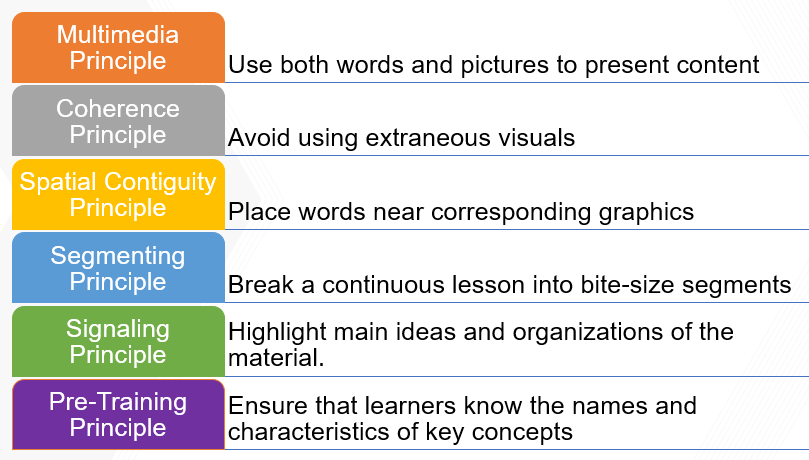Redesigning an Open Textbook by Leveraging Media, Pedagogy, and Student Collaboration
On November 10, 2020, I did a presentation with Dr. Aselia Urmanbetova from the School of Economics at the Open Education Conference. We discussed how we leveraged media, pedagogy, and student collaboration to redesign an open textbook while both of us led a team to work on the project during the past year.
Aselia teaches an introductory economics class, ECON-2105: Principles of Macroeconomics, at Georgia Tech. It is a 3-credit-hour course offered three semesters every year. In Fall 2020, a total of 280 undergraduate students are enrolled. The original required commercial textbook costs approximately $160 for an eTextbook or $249 for a paperback. In Fall 2018, Aselia adopted an Openstax textbook, Principles of Macroeconomics 2e, which is freely available for students to view online or download, or $5 if they want to get a print copy. The result of an end-of-semester survey indicated that the students very much appreciated the use of a free textbook, and the majority of them were overall satisfied with the textbook. However, 30% of the respondents never used the resources available after each chapter. Among those who used the resources, only half found them useful. When asked how the book could be improved, the respondents said they wished the book could be better presented with more visuals, more interactive, and provide more practices to help them learn.
With support from an Affordable Learning Georgia grant, we formed a team that comprises of subject matter experts, content and assessment developers, multimedia and web developers, and instructional designers, working together to redesign the textbook. The transformation of the textbook was accomplished through rigorous application of the following six strategies:
-
Multimedia learning: We employed six research-based principles (Clark & Mayer, 2014) for multimedia learning as the guidelines for presenting the textbook content (see Figure 1). While we added more images to help present content, we ensured that the use was minimal and they were relevant to the content. We used curated videos extensively to help explain course concepts. These videos were selected from reliable sources. We only selected short videos that are generally no more than 10 minutes long. They must also be accessible with captions or transcripts. We embedded a total of 111 videos in 20 chapters – students do not need to navigate away from the book in order to watch the videos.
- Active learning: We embedded frequent self-assessment exercises in the textbook to engage students by enabling them to practice and reflect on their learning. We added 130 quick knowledge check questions, which are multiple-choice questions placed right after the corresponding topics. There are also 74 review questions, which are open-ended questions at the end of each chapter.
- Practice with feedback: We provided students with instant feedback on both correct and incorrect answer choices when they practice with quick knowledge check questions. Students can also check for answers and explanations for the review questions.
- Students as producers: We believe in the benefits of a student-as-producer approach – students are not only consumers of knowledge but also producers of knowledge. We recruited several students to help with content, assessment, and web design under the supervision and guidance of the project leads. They have had some experience with the course, for example, completing the course as a student, working as a teaching assistant, or a peer tutor for the course. Their perspectives on how a textbook should be designed for students became valuable assets for the project. We appreciate their contributions, without which this project would not be successful. To learn more about these contributors, please take a look at our project team.
- Peer review: The textbook was reviewed by people who are not involved in the project before it was made available to students.
- Student feedback: We collect feedback from students for continuous revision and improvement of the textbook.
The redesigned textbook was put into use in ECON-2105 in Fall 2020. We conducted a survey and a total of 128 students completed it. These students are from all six colleges at Georgia Tech. Among them, 49% are freshmen and 31% sophomore, and 59 are male, and 39% female. When asked about their satisfaction with the textbook, 87% of them said they are Very Satisfied or Satisfied. We also asked them to rate their agreement with several statements regarding the learning effectiveness of the textbook, as well as the usefulness of the practice exercises. Figure 2 and Figure 3 show the results of their ratings on each statement.
The survey results indicate overall positive feedback from students in the textbook. We asked students what else we could do to make it better. Some students say it is good as it is, for example:
I love how the textbook is so interactive and really reinforces the lectures. I think it is one of the best textbooks for a class I have ever had due to its interactions, information, and questions it provides.
The textbook is a nearly perfect source for learning the info and has helped me a lot.
Other students wish for such features as bookmarking, annotating, searching, and more practice questions (because they are good!). We will continue enhancing the book as we get more feedback from students in the future. We also welcome feedback from educators and students from other institutions.
The book is freely accessible at https://intromacro.econ.gatech.edu/. The website has a responsive design and students can read the book from their mobile devices. What is even better is that students can download the book as an app on their devices for offline reading.
Reference:
Clark, R. C., & Mayer, R. E. (2016). E-learning and the science of instruction: Proven guidelines for consumers and designers of multimedia learning. John Wiley & Sons.








